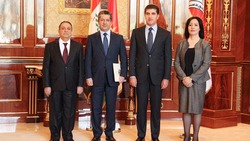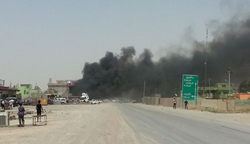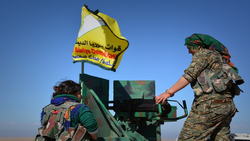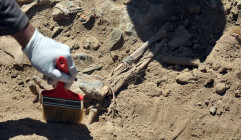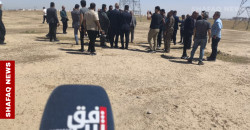Imperfect allies and non-state actors: Lessons from the 1991 no-fly zone in Iraq
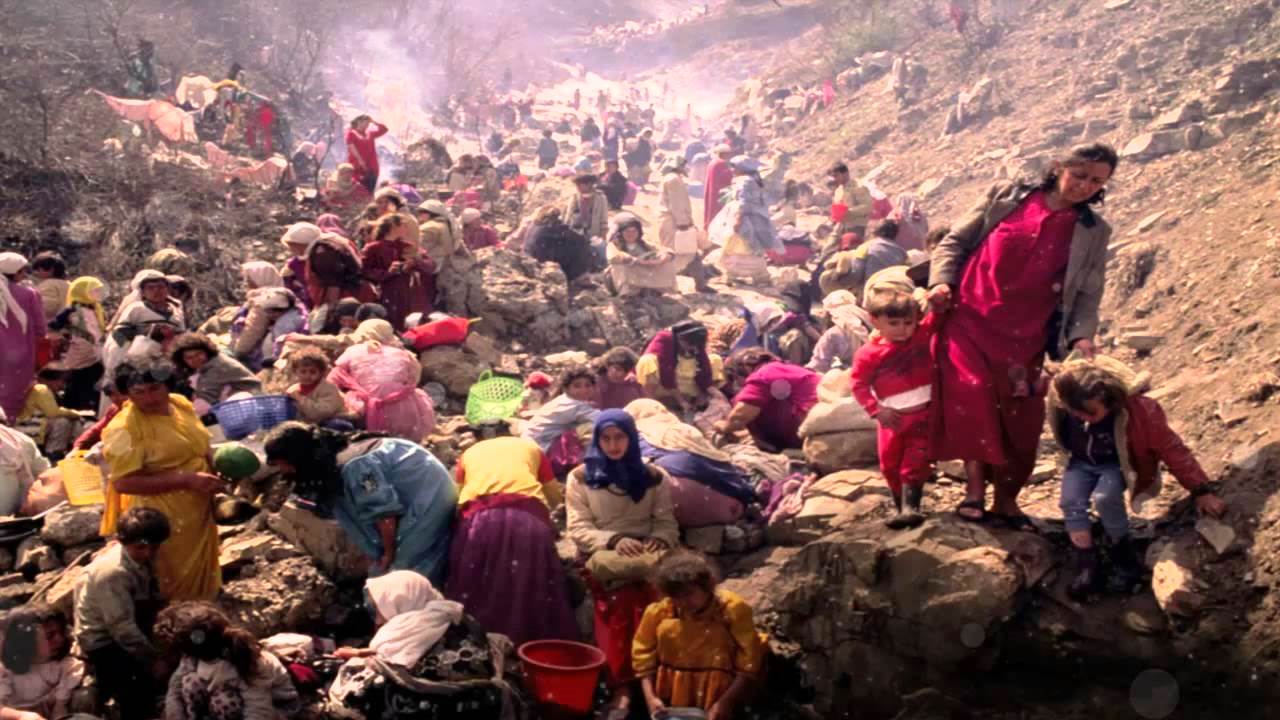
Shafaq News/ Thirty years ago, Saddam Hussein’s totalitarian regime was on the verge of committing genocide against Iraq’s Kurds. Forced to withdraw its invading forces from Kuwait by the international community in 1990, the Baath regime was looking to strengthen its severely weakened grip over the country’s population. In response, the United States, United Kingdom, and France launched Operation Provide Comfort (OPC) in April 1991 to establish and enforce a no-fly zone over northern Iraq, protecting the local population from Saddam’s forces.
The intervention is one of the more celebrated humanitarian interventions in recent history, albeit an imperfect one, since Saddam could still deploy his military and it was up to the Kurds to contain regime forces on the ground. But the international intervention staved off a genocide, empowered local Kurdish authorities to provide services and protect local communities, and created a haven for civilians across Iraq who were able to reach the north. Such interventions can bring humanitarian reprieve for local populations, with global and on-the-ground allies preventing despots from unchecked abuses and preventing conflicts from becoming regional conflagrations.
RUN-UP TO THE CUSP OF GENOCIDE
The notion of using military force to protect civilians remains a contentious issue two decades after the emergence of the Responsibility to Protect (R2P) concept. Interventions can go wrong, are difficult to execute, and carry domestic political ramifications. Operation Provide Comfort shows that the risks and challenges of humanitarian interventions can be managed if they are undertaken with allies and if the expectations of both the enablers and beneficiaries of intervention are realistic and managed. Indeed, in 1991 the U.S. was at first content with forcing Saddam’s withdrawal from Kuwait. It was opposed to committing to a no-fly zone and to committing U.S. troops to a long-standing effort by revolutionaries in Iraq to topple the Baath regime, though the U.S. had called on the Iraqis to do so.
Still, after the U.S. crushed Saddam’s forces in Kuwait, groups in Iraq’s north and south rose up against the regime, which retaliated with brutality and a wave of atrocities. America did not come to the aid of the rebel groups, despite their expectations. Now the fear was that the Baath regime would launch another genocide against the Kurds, as it did in the 1980s. Millions of Kurds fled towards the border with Iran and Turkey.
WORKING WITH ALLIES
Under domestic pressure to protect the Kurds, the U.K. was critical in convincing Washington to enforce a no-fly zone over Iraqi Kurdistan. Britain also secured France’s support, with the trans-Atlantic alliance undergirding the air military campaign in support of the Kurds. Shared understanding of threats and operational priorities and diplomatic leadership allowed for burden-sharing that mitigated costs and risks to the interveners.
The U.S. role was essential because of America’s unique operational capabilities and diplomatic, political, and legal pull. Years before R2P, only a loose interpretation of international law — specifically of two U.N. Security Council resolutions — could underpin the intervention. The first was UNSCR 678, adopted in response to Saddam’s invasion of Kuwait, which had authorized the use of force to “restore international peace and security in the area.” The second was UNSCR 688, which stipulated that the oppression of the civilian population in Iraq threatened international peace and security in the region. Even so, Russia rejected the notion that the no-fly zone over Kurdistan was authorized by the Security Council.
Diplomatically, the U.S. presence in the coalition enabled the participation of other countries, including Australia, Belgium, the Netherlands, Saudi Arabia, Turkey, and Italy, to ensure a wide spectrum of support and active stakeholders. This was especially important regarding Turkey. Despite its initial reservations about Kurdish autonomy in Iraq, Turkey became a pivotal launch-pad for the no-fly zone. As an active stakeholder, rather than a passive one, Turkey was not a spoiler and disrupter of the humanitarian campaign, and it saw the intervention as an opportunity to reduce and manage refugee flows into its borders.
IMPERFECT ALLIES AND SUB-STATE ACTORS
The intervention had many limitations. Foregoing the deployment of ground troops, the international coalition could not prevent the regime from attacking the Kurdish peshmerga forces. Thus, a clash between the Peshmerga and Saddam’s army soon after the no-fly zone went into force resulted in 500 casualties. Even after the clash President George H.W. Bush implicitly noted the known limitations of the intervention and defined constraints on the underlying purpose and parameters of the no-fly zone. Referring to the Baath regime’s genocide and use of chemical weapons, he explained: “Saddam Hussein, having learned his lesson once, will hopefully not embark on the kind of carnage” that sent allied soldiers into northern Iraq in the first place. In other words, the no-fly zone did not intend to prevent all instances of violence and military clashes. But for more than a decade, it deterred Saddam from committing mass atrocities.
As in Syria today, international organizations and governments also found themselves grappling with the challenge of balancing the imperative of alleviating humanitarian suffering against the indirect enabling of a resolute and nefarious regime that retained the benefits conferred by state sovereignty. Moreover, while the Kurdish forces in Iraq had proven to be resilient and capable fighters in their decades-long rebellion against Saddam Hussein, they were for the most part an untested ally. And they were vulnerable to infiltration and meddling by Saddam, Iran, and Turkey, as well as factional infighting. Indeed, three years later the two main Kurdish parties became engulfed in a civil war.
However, the Kurds embraced self-governance with encouraging results, despite the daily threat of invasion by the Baath regime and rival regional actors who were pursuing conflicting agendas in the north and determined to prevent Kurdistan from flourishing. Free from the threat of Saddam using his air superiority to launch military onslaughts, Kurdish authorities devoted the resources generated by the sale of oil as part of the U.N. Oil for Food Programme on U.N.-approved projects, including schools, medical clinics, and infrastructure. In the rest of Iraq, Saddam embezzled funds to prop up the Baath regime, rather than address the humanitarian needs of the population
Exploiting its sovereignty, Baghdad attempted to constrain U.N. assistance; however, when U.N. agencies became impeded, other local and international humanitarian organizations filled the gaps. NGOs took it upon themselves to resettle and rehabilitate communities and infrastructure in areas where U.N. agencies were unable to do so. International funding and aid was provided directly to NGOs, as opposed to the Kurdish authorities, because of concerns that circumventing Baghdad could lead to Iraq’s territorial disintegration.
WORKING WITH NONSTATE ARMED ACTORS TODAY
The experience of Iraq’ Kurds in the 1990s shows that under some circumstances, on-the-ground actors, including armed non-state actors, national liberation movements, and tribes, and socio-religious groups, have the potential to provide basic services and security, and, fundamentally, do so as pivotal and effective allies for international actors intervening on humanitarian grounds. This stands in stark contrast to those other non-state actors that, while potentially capable of providing services, are predatory and inflict systemic suffering on the communities they rule.
Establishing firm and enforceable guidelines for international support for the nonstate actors that the U.S. and its allies work with is one crucial aspect of building mutually beneficial ties with imperfect allies on the ground that address the needs of local populations. In the case of Iraq’s Kurdish parties, because the U.S. is working with secessionist actors that seek a state for the Kurdish people and greater alignment with the West, it has partners that by extension have a greater propensity to adhere to international norms and are susceptible to U.S. influence.
Despite possibly divergent objectives, such guidelines serve to clarify expectations. By having such a guiding framework that imposed conditions and restraints to produce mutually beneficial gains, the 1991 coalition also precluded Baghdad from weaponizing its sovereignty to create complications that could have prevented the campaign from being implemented. Since it became clear the West would not permit an independent Kurdish state to emerge — with Turkey, in particular, a key player in the campaign — Baghdad was unable to forge a convincing anti-separatist political narrative to mobilize international resistance against the no-fly zone.
In the wide set of crises in the Middle East and North Africa — Libya, Iraq, Syria, and Yemen — Washington’s options have been constrained by the plethora of disparate actors involved in the conflicts engulfing the region. These conflicts overlap in some instances, and are shaped by transnational dimensions, proxy warfare, and the proliferation of militias and other armed non-state actors, with hundreds of thousands of armed fighters who do not answer to national institutions.
Responding to these crises thus warrants a strategy focused on identifying the right on-the-ground partners. The 1991 no-fly zone over Iraqi Kurdistan shows that the United States can work effectively with appropriate on-the-ground partners as well as international allies in humanitarian responses and local stabilization efforts. Such approaches may be needed well beyond the Middle East, from Afghanistan as the U.S. military withdraws to Somalia and West Africa.
Source: brookings.edu
